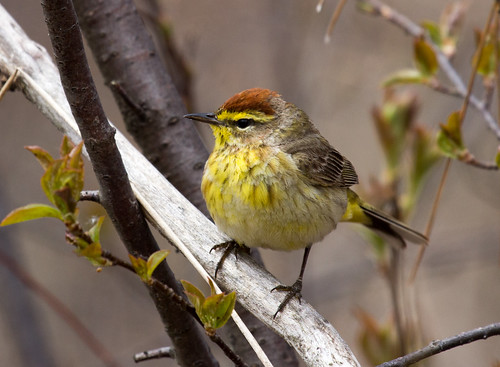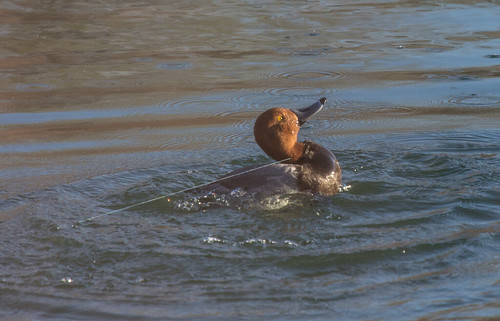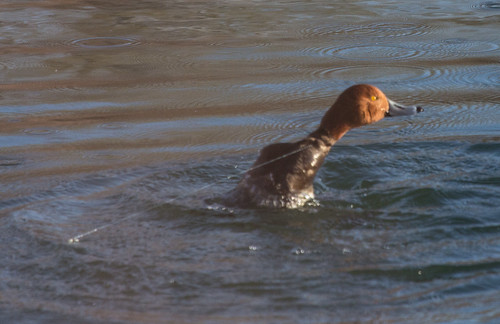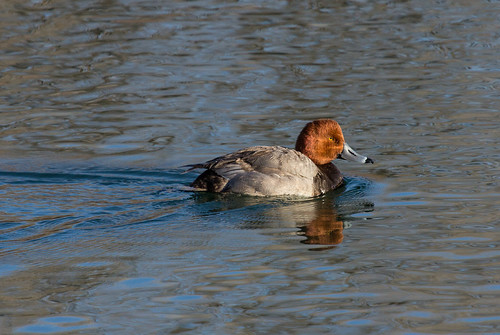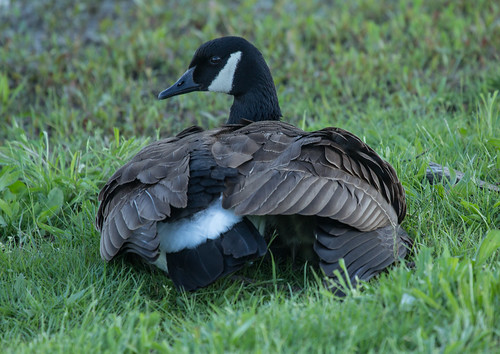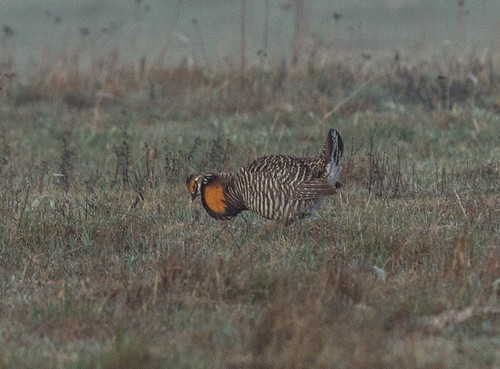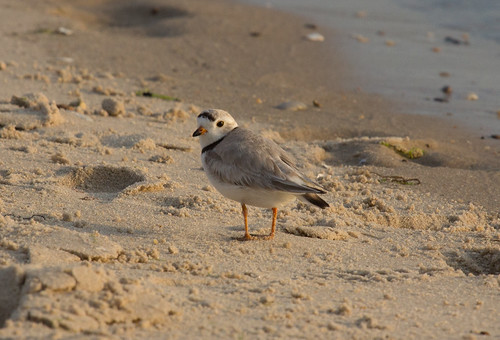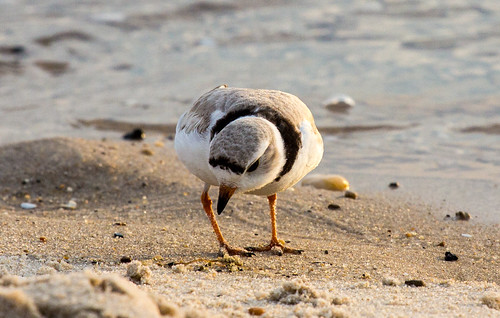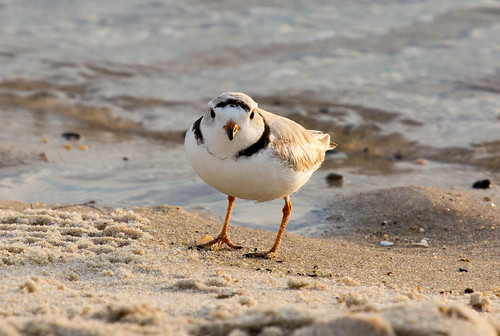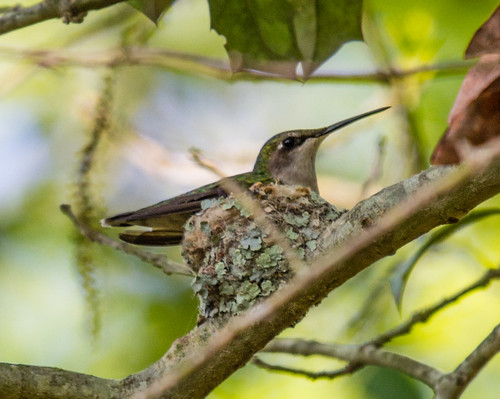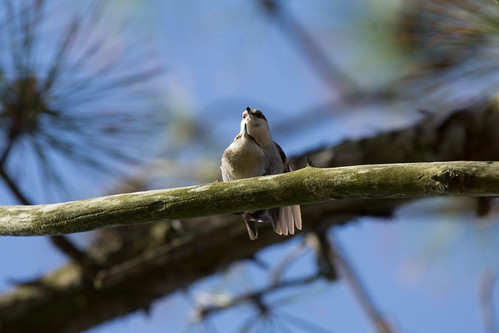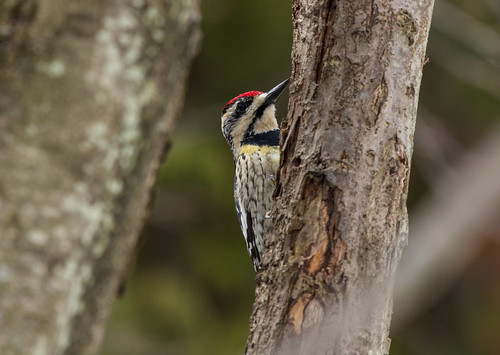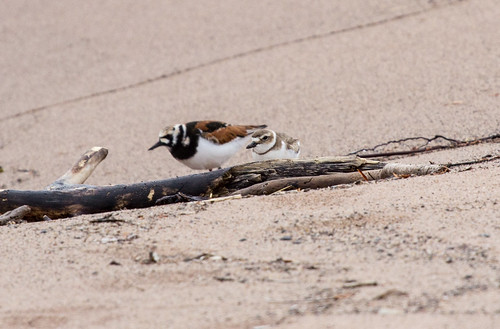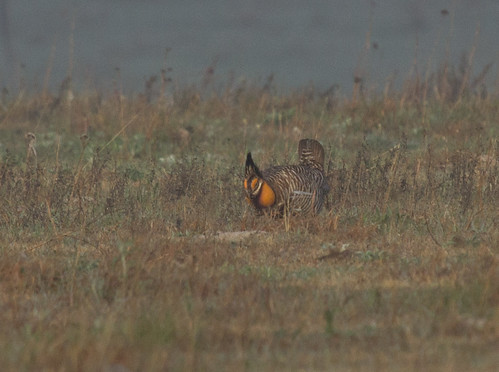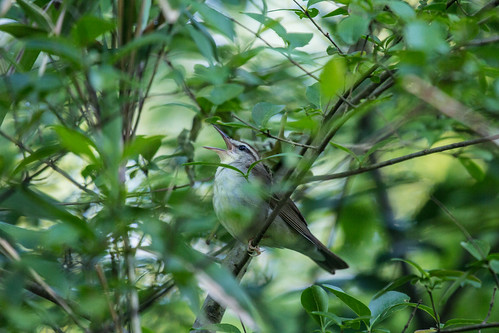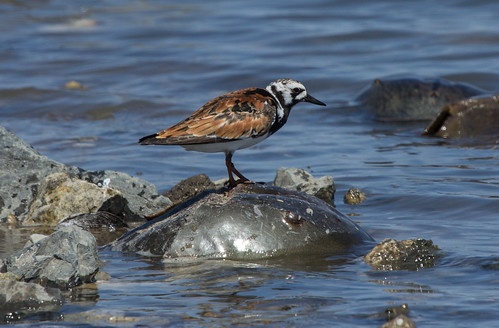I’m having a great time this year, as I try to see as many birds as I can. I’m of course focused on getting a big year list, and on seeing some birds I’ve never seen before, but I’m equally interested in seeing old friends again and again. As a matter of fact, some of my most treasured experiences of the year have been with common species I’ve already seen dozens, hundreds, or even thousands of times.
In Colorado, at the Pueblo Reservoir, we saw a gorgeous male Redhead entangled in monofilament. He struggled for a good ten minutes while we watched in dismay.
It was impossible for us to rescue the poor bird, and usually entangled birds get so desperate to free themselves that they make things worse. But this one somehow managed, in a dive, to pull out of it, and swam off good as new. I was thrilled beyond words. I’ve seen a lot of beautiful Redhead drakes in my life, but none so beautiful as this one.
One cold afternoon in Delaware, I watched a mother Canada Goose who had hunkered down and held her wings out in an awkward pose, keeping her goslings warm against her body and sheltered against the wind. Her mate stood watch, and when he raised his head to look at me, I stepped back to keep from alarming them. Every single bird we see was raised by parents who did what they could to keep their young thriving, and Canada Geese are not merely abundant but actually too plentiful, but I treasured seeing this wonderful pair.
I’ve watched Greater Prairie-Chickens several times over the years, but the lone bird I saw while I was in Kansas near the Cheyenne Bottoms captured my heart. He was cackling and dancing and booming, with no males or females anywhere around to see his amazing performance.
The beach at Cape Henlopen State Park is the only place in all of Delaware where Piping Plovers breed. I did a Big Day as part of a team participating in Delaware’s annual Birdathon, and Cape Henlopen was our last stop of the day. Piping Plovers breed in a fenced-in, closed-off part of the beach, and were easy to see from a distance, and when we went down on the public beach, two Piping Plovers were strolling about right in front of us! I spent 10 or 15 minutes photographing them while everyone else scanned the ocean for new birds. When they yelled out “Surf Scoter!” and “Red-throated Loon,” I stepped over to the scope long enough to add them, but instantly gravitated back to the lovely little plovers. They are endangered, and so I’ve not had nearly enough opportunities to see them over the years, but any moment with a Piping Plover is a moment to treasure forever.
This whole year has been like this—watching two different female Ruby-throated Hummingbirds building nests,
seeing a pair of Brown-headed Nuthatches mating,
spending a while day watching one young male Black-capped Vireo establishing his territory.
While I was home in April, I spent 20 minutes watching one gorgeous male Yellow-bellied Sapsucker drilling little wells in an aspen and lapping up sap.
All these little moments are adding up to a tremendous year. I’m doing my best to keep my field notebook up to date, and to keep my photos labeled by place and species and behavior. I’ll be able to pull out lovely memories on dark days for many years to come.
